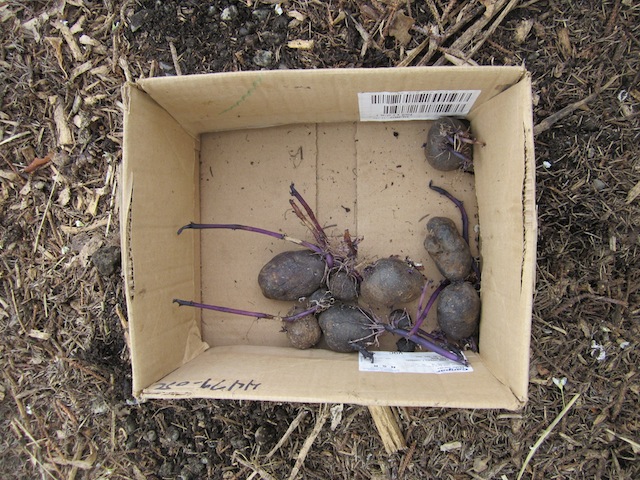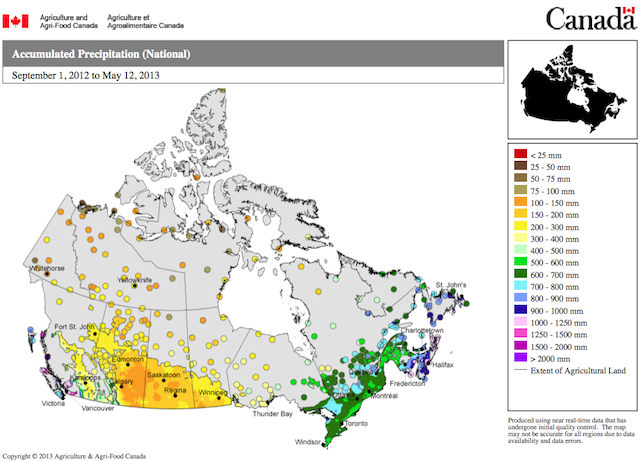GUEST POST by Shaen Cooper
Last fall before the snow came, I tried deep mulching using a layer of waste paper. I put the waste paper directly over the soil. In some areas, the paper was up to one inch thick. Then I covered the waste paper with a deep layer of mulch. I used tree chips and grass clippings ? both waste materials from neighbors. In some areas, I used old, moldy straw and hay. The top mulch was six to twelve inches deep. During the winter, the soil was insulated by the paper and mulch. There appeared to be more bacterial action in the soil.
In the spring, I found the layer of paper well on its way to decomposing. Under the layer of paper, the soil was moist to the touch. Normally, the soil would be very dry after the winter and would require heavy watering.
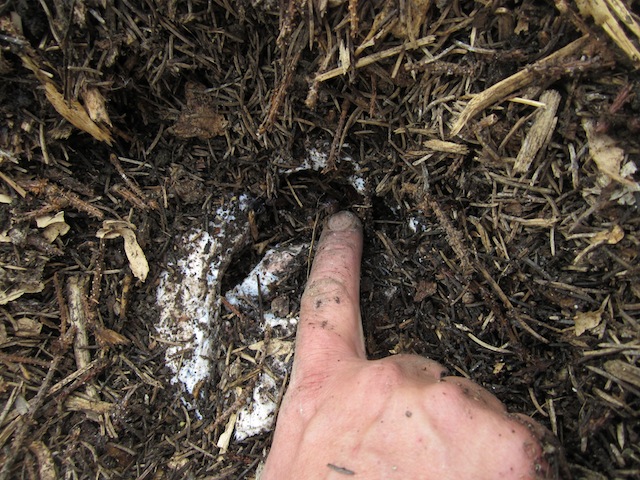
You can see the layer of paper after the winter is well on the way to decomposing but is still acting as a protective layer to the soil.
When choosing mulch, use waste materials that you have on hand or reuse a waste material of neighbors. Waste hay always has lots of grass seed. Use waste hay to mulch areas you want grass to grow.
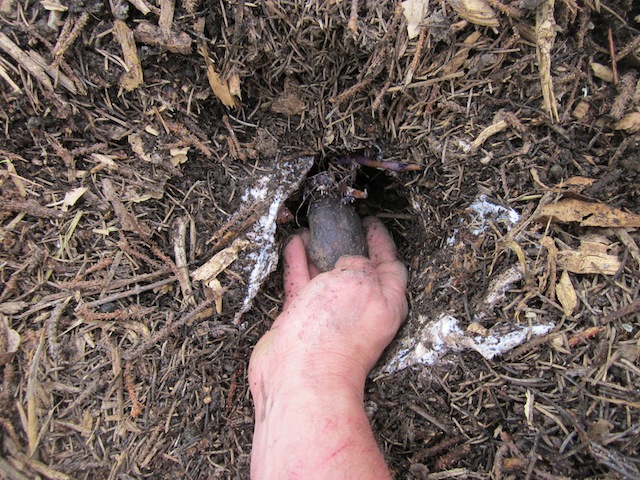
I made the hole large enough to get my hand in. The paper layer will stop weeds until the potato can get going.
Every spring, I clean up the raspberry brushes and take out the old canes. These canes are good for trellising or marking individual plants. Deep mulching is good for:
- disposal of waste household or office paper
- keeping the soil moist and fertile
- physical barrier to weed growth
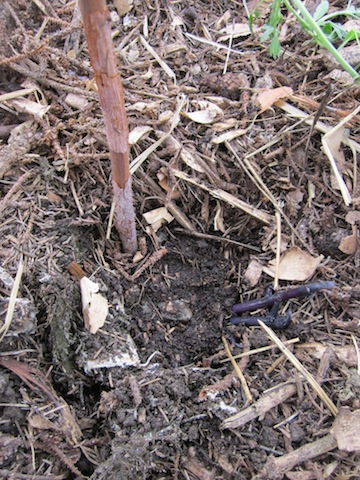
I like using canes as a marker for new plants. This helps me know where to hand water while the plant is getting going.
Updated May 21, 2013: Please note that drought and ground water depletion and contamination are becoming the issue of our time. With our government selling rights for fracking, safe ground water may soon be a thing of the past. Many aspects of permaculture will be helpful in drought situations. Here are some steps we can take to help stop drought:
- Keep soil temperature as low as possible by deep mulching.
- Increase organic material so when the rains come the water will stay on the land.
- Fight soil compaction ? which repels water ? by encouraging soil flora and fauna.
- Use drip irrigation and greywater systems.
- Plant forest gardens to provide habitat for wild animals while producing food for humans.
- Plant drought resistance grasses, forbs and weeds.
- Reduce pressure on land by using intensive grazing rotation plan.
- Build ponds or use mobile ponds.
- Use mobile shade for livestock to encourage manuring in shaded areas.

